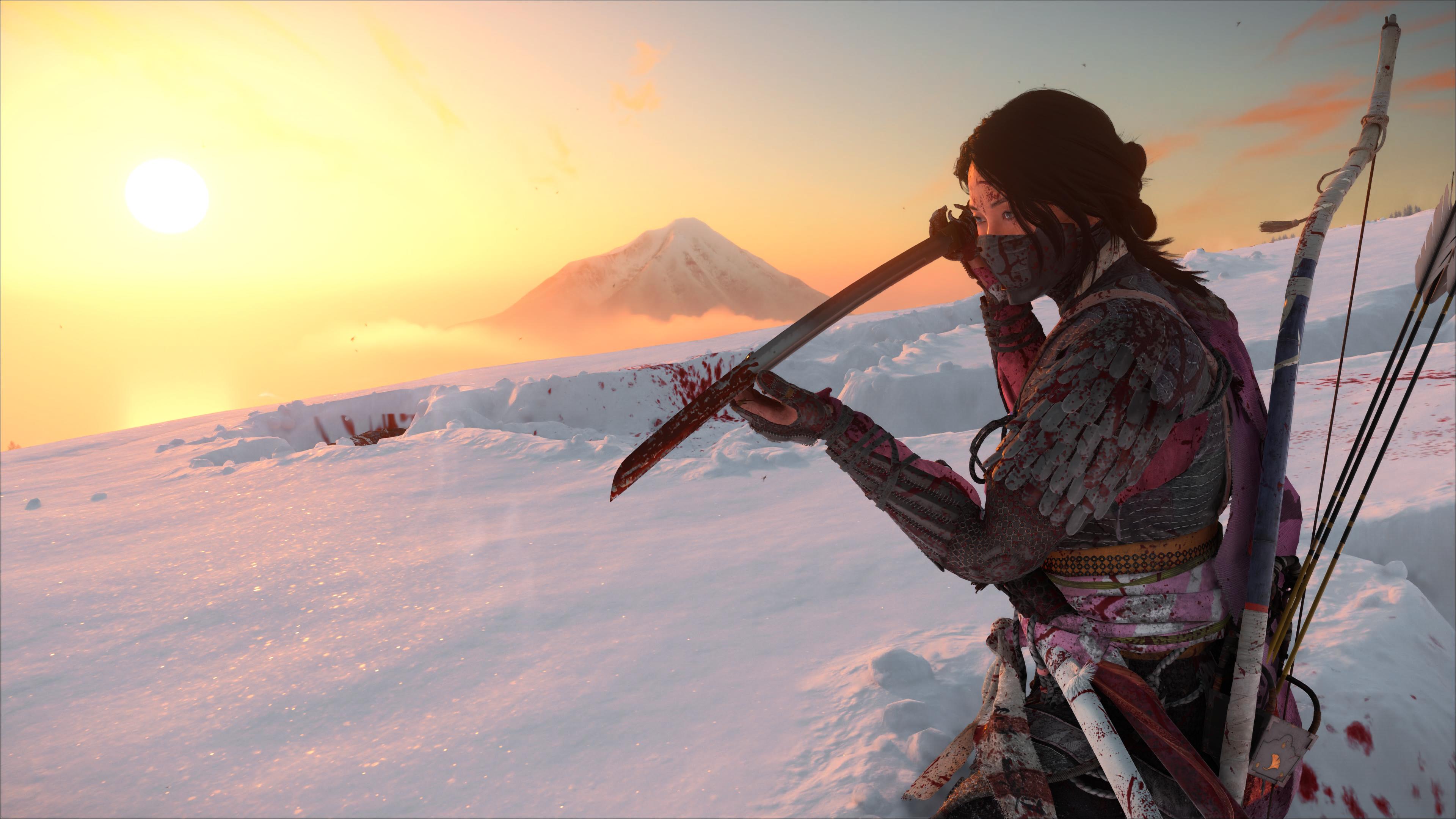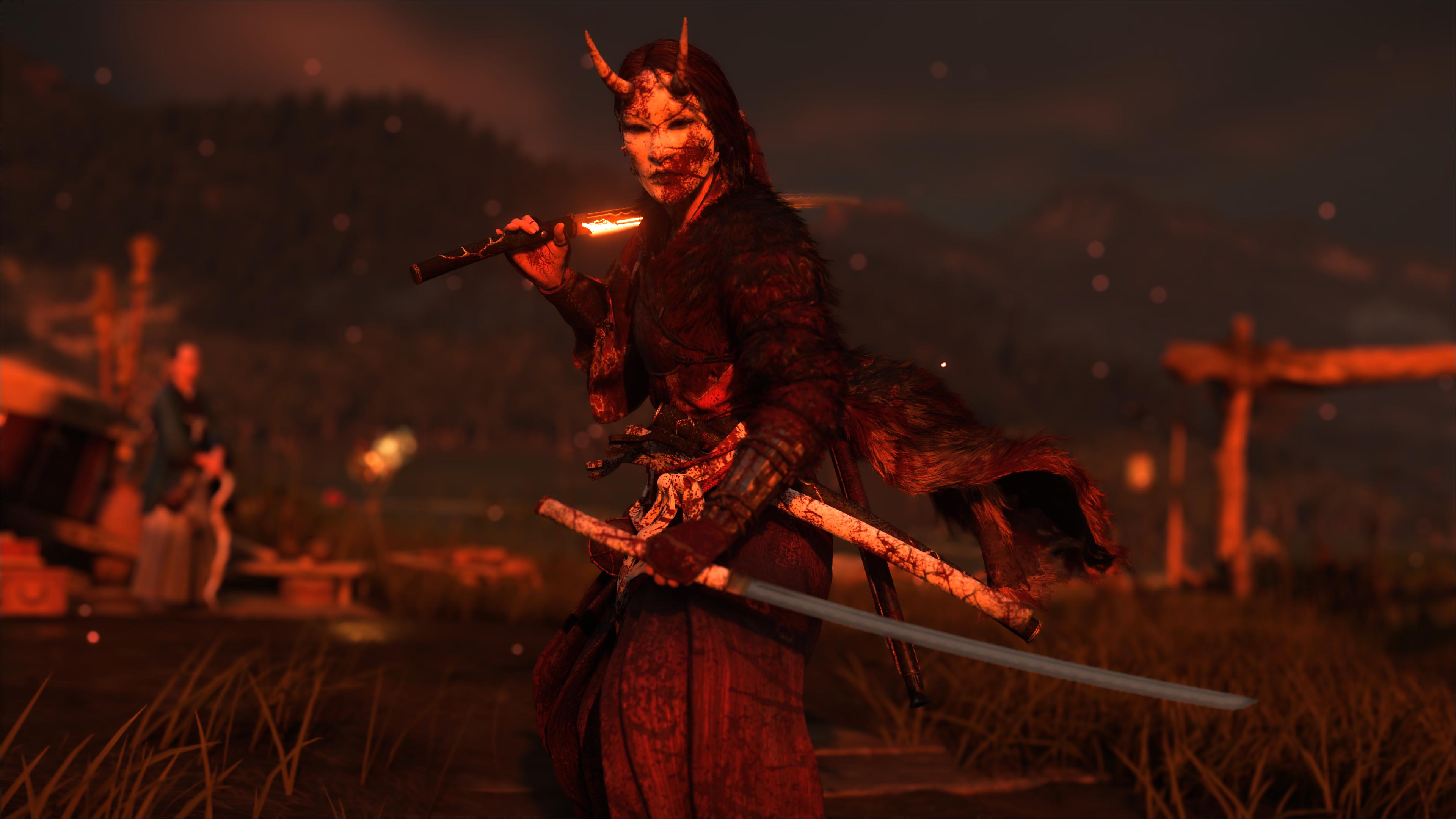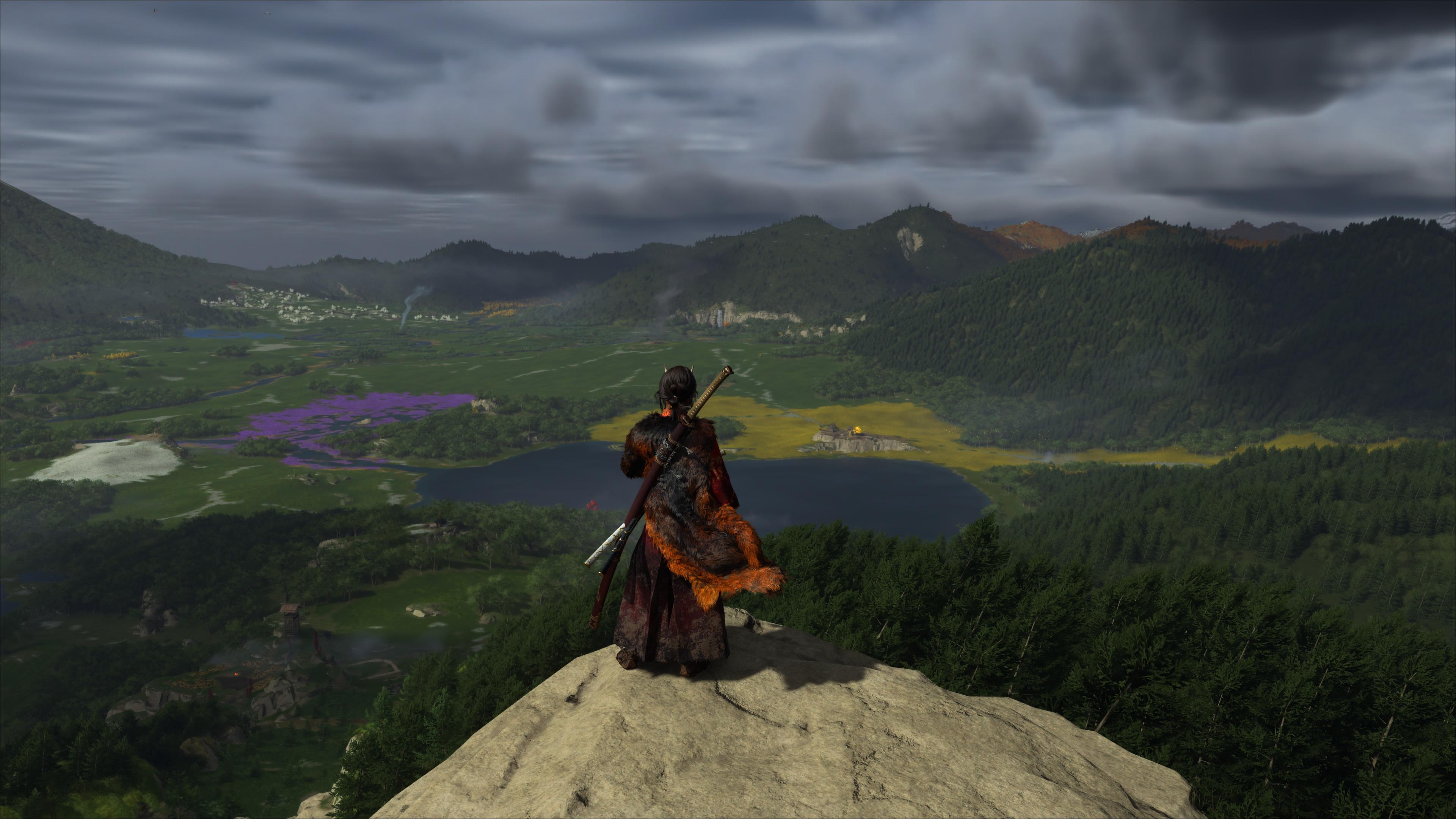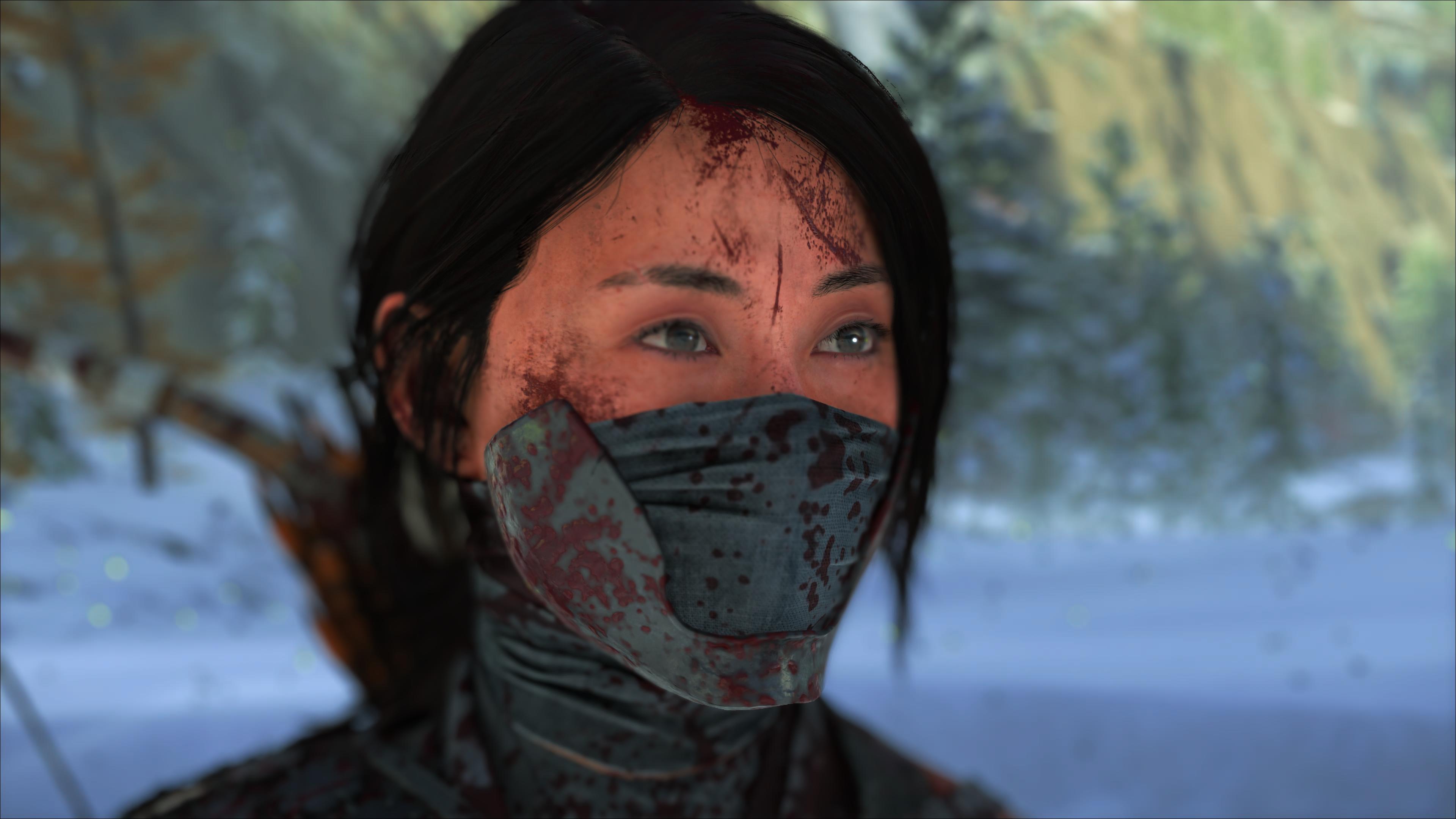
Ghost of Tsushima aimed to explore the idea that sometimes, when fighting an opponent who disregards all rules, doing whatever it takes to win might be necessary. However, this focus on justifying actions through a rigid samurai code of honor created a main character who felt overly righteous and, ironically, contradictory. Despite committing questionable acts during wartime, he remained preoccupied with maintaining a specific image of honor, making him appear naive and hypocritical.
The follow-up, Ghost of Yotei, delivers a more focused story, and it’s told effectively. Fans of shows like Blue Eye Samurai or Lady Snowblood will quickly recognize the tone. The story begins with Atsu witnessing the brutal murder of her family by a ruthless outlaw lord and his masked assassins, the Yotei Six. She narrowly escapes, impaled with a sword but left for dead. For sixteen years, she hones her skills as a mercenary, driven solely by a thirst for revenge, and returns home to confront her past. We follow Atsu as she races toward her family’s estate, determined to carry out her vengeance. Despite the devastation caused by the fire, she finds the ginkgo tree at her home is blooming again – a symbol of her own strength and resilience.
While the game isn’t overly complex, it offers meaningful symbolism if you look closely. Many of the side quests reflect the main character Atsu’s emotional journey, particularly her struggle with grief and her changing priorities. Atsu begins as a closed-off and cautious person, but gradually learns to trust and connect with others – a theme visually represented by the growing list of allies and vendors you gather throughout the game. Despite the violent and revenge-driven story, there’s a surprising amount of heart, warmth, and even humor. I became genuinely invested in the characters, which is rare in a large open-world game with so many distractions. The game also strikes a good balance between giving you freedom to explore and clearly guiding you towards your next objective.

You make a powerful first impression, eliminating one of the Yotei Six within the first hour. This immediately establishes your terrifying reputation as the Ghost – a relentless, vengeful spirit that refuses to stay dead. As you play, this reputation only grows, influencing how both enemies and allies react to you. People are more willing to surrender when they realize the rumors are true and you’re as dangerous as they say. Your wanted posters become increasingly menacing as you eliminate more targets, increasing the bounty on your head and attracting skilled hunters determined to capture you. The game is packed with exciting moments stemming from the legend you create around Atsu, and everything builds to a satisfying climax.
The side activities in this game are a big improvement. There are many more unique sidequests, each with its own story, and even the things you do repeatedly stay interesting. For example, a simple task like cutting through bamboo could suddenly become a challenge with added conditions, like using your less-preferred hand. You’ll also encounter unexpected situations – I once had to pull spears out of the ground while being struck by lightning! Unlike the previous game, where you relied on markers and the wind to guide you, this game features longer views and open areas, encouraging you to use your eyes or a spyglass to discover points of interest. And the best part is, not everything is marked on the map, so exploration is truly rewarding.

Instead of immediately showing all locations on your map, you discover interesting places gradually and naturally. You might learn about them from fellow travelers, stumble upon them by chance, or acquire information by capturing enemies or purchasing maps. This approach makes exploration feel more realistic and prevents the game from becoming a simple race to check off points of interest, ultimately making the world feel more alive and believable.
The game flows with a satisfying pattern: explore a new region, grow stronger, and then challenge a major enemy. You’ll learn new weapons from local experts, complete bounties for money, use that money to improve your abilities, discover hidden shrines on the map to further enhance your skills, and ultimately take on one of the powerful Yotei Six.

The game boasts one of the most stunning open worlds ever designed, a truly expansive landscape that feels breathtaking, reminiscent of the awe-inspiring Hyrule in Breath of the Wild. Wide-open plains teem with life – huge herds of animals roam freely, flocks of birds swirl in mesmerizing patterns, and the grass realistically bends and breaks underfoot. It’s filled with small details that bring the world to life, like blood spreading in water or the unique way the protagonist draws her oversized blade. Even the way blood splatters from each weapon is distinct, a subtle but impactful detail akin to a playful taunt in competitive games.
Whether you’re exploring scorched coastlines, snow-capped mountains, or bamboo forests, the game offers a diverse and believable world. Like many open-world games, it features a captivating soundtrack of Japanese music with vocals as you venture into new areas.

The combat system is very similar to Ghost of Tsushima: weapons are powerful and battles are usually quick. While it’s not overly complex, it remains engaging because each of the five weapon types is most effective against different enemies. Crucially, it *feels* fantastic – the visuals and sound design are excellent. It’s not a groundbreaking combat system, but it successfully creates the immersive experience Sucker Punch intended, much like the Batman: Arkham series did with its satisfying and fluid melee combat.
Ghost of Yotei demonstrates why many games benefit from a sequel. While the original Tsushima had a solid foundation, Sucker Punch Productions has refined every aspect that needed improvement. The characters are now much more developed and engaging, even the antagonists, and the gameplay feels smoother with improved climbing and more diverse, story-driven missions. The game also thoughtfully explores the Ainu people – their culture, history, and the effects of Japan’s conflicts on them – with fantastic performances from the entire cast, both in Japanese and English. Erika Ishii is particularly captivating, and Noshir Dalal delivers what might be his career-best performance. Overall, Ghost of Yotei is a significant leap forward and easily Sucker Punch’s best work to date.
Read More
- Robert Kirkman Launching Transformers, G.I. Joe Animated Universe With Adult ‘Energon’ Series
- Avantor’s Chairman Buys $1M Stake: A Dividend Hunter’s Dilemma?
- NextEra Energy: Powering Portfolios, Defying Odds
- AI Stock Insights: A Cautionary Tale of Investment in Uncertain Times
- Hedge Fund Magnate Bets on Future Giants While Insuring Against Semiconductor Woes
- EUR TRY PREDICTION
- Ex-Employee Mines Crypto Like a Digital Leprechaun! 😂💻💸
- UnitedHealth’s Fall: A Seasoned Investor’s Lament
- The Illusion of Zoom’s Ascent
- Oklo’s Stock Surge: A Skeptic’s Guide to Nuclear Hype
2025-09-25 16:17